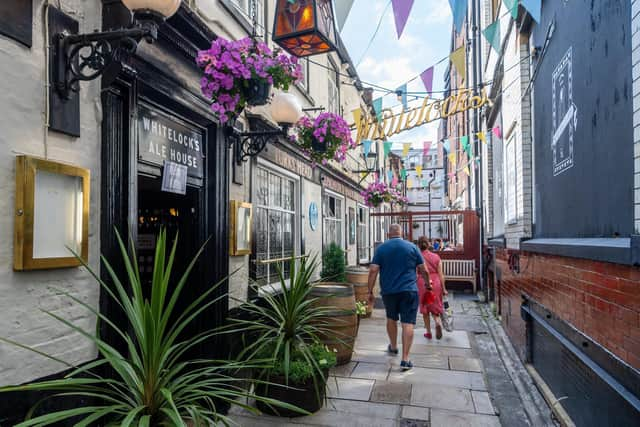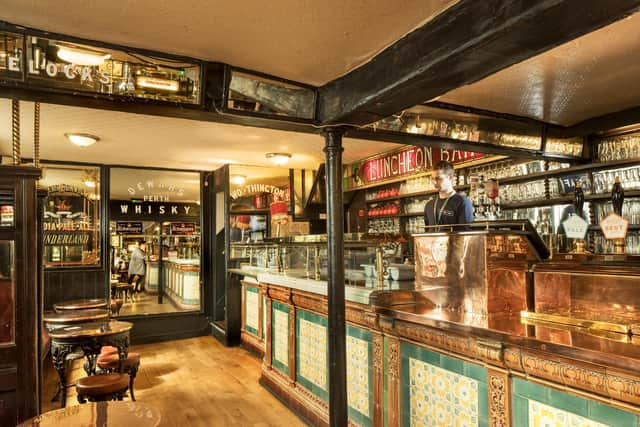Historic Leeds pub Whitelock's Ale House gets upgraded heritage protection to recognise its unique survival
and live on Freeview channel 276
Whitelock’s Ale House in the city centre - one of a small number of remaining upmarket Victorian ‘luncheon bars’ in the country - has been bumped up from Grade II to the second highest grade, Grade II* by the government.
Described by writer Sir John Betjeman as ‘the very heart of Leeds’, Whitelock’s became a favourite watering hole for celebrities including actor Peter O’Toole, star of epic 1962 film Lawrence of Arabia and ballerina Margot Fonteyn.
Advertisement
Hide AdAdvertisement
Hide AdWhitelock’s is one of the best examples of a late-19th century luncheon bar. It retains its 1895 interior decorative scheme and a wealth of high-quality features, including fixed-bench seating, brass barley-twist columns, stained-glass windows, an abundance of mirrors and a rare ceramic-tiled bar counter.


The pub’s long narrow yard also reflects its original medieval plan. In 1897 when electric lighting was installed there was a futuristic revolving searchlight at the entrance to draw customers in. It soon gained the reputation amongst the arts world of being the social and cultural hub of Leeds.
Whitelocks has been licensed since 1715 and was taken over by John Lupton Whitelock in 1867. His son William Henry Whitelock began a major remodelling project in 1895 by local architects Waite & Sons. In the 1890s it became known as Whitelock’s First City Luncheon Bar and drew wealthy clientele.
Whitelock’s Ale House was one of 11 pubs across England put forward by the Campaign for Real Ale (CAMRA) Pub Heritage Group as part of an ongoing collaboration with Historic England to protect historic pubs and their interiors. The pubs, plus a pair of cast-iron lamps, have been listed, upgraded or relisted as part of this project.


Advertisement
Hide AdAdvertisement
Hide AdRelisting involves updating and adding to listing descriptions of buildings or sites on the National Heritage List for England, some of which were written 30 years ago.
Although the term ‘public house’ can be traced back to the 1600s, the ‘pub’ as a distinct building type emerged in the mid-1800s. It brought together and developed three earlier types of building - the inn, tavern and alehouse.
Historic England chief executive Duncan Wilson said: “At a time when many historic pubs in England are susceptible to change or at risk of closure, we are pleased to celebrate pubs that have kept their remarkable interiors. These rare interiors help tell the fascinating story of pubs over the centuries and how they reflected society. From celebrity haunt Whitelock’s Ale House in Leeds to the Prince Alfred in London with its ‘snob screens’, they all fully deserve the protection given by listing.”
Comment Guidelines
National World encourages reader discussion on our stories. User feedback, insights and back-and-forth exchanges add a rich layer of context to reporting. Please review our Community Guidelines before commenting.

